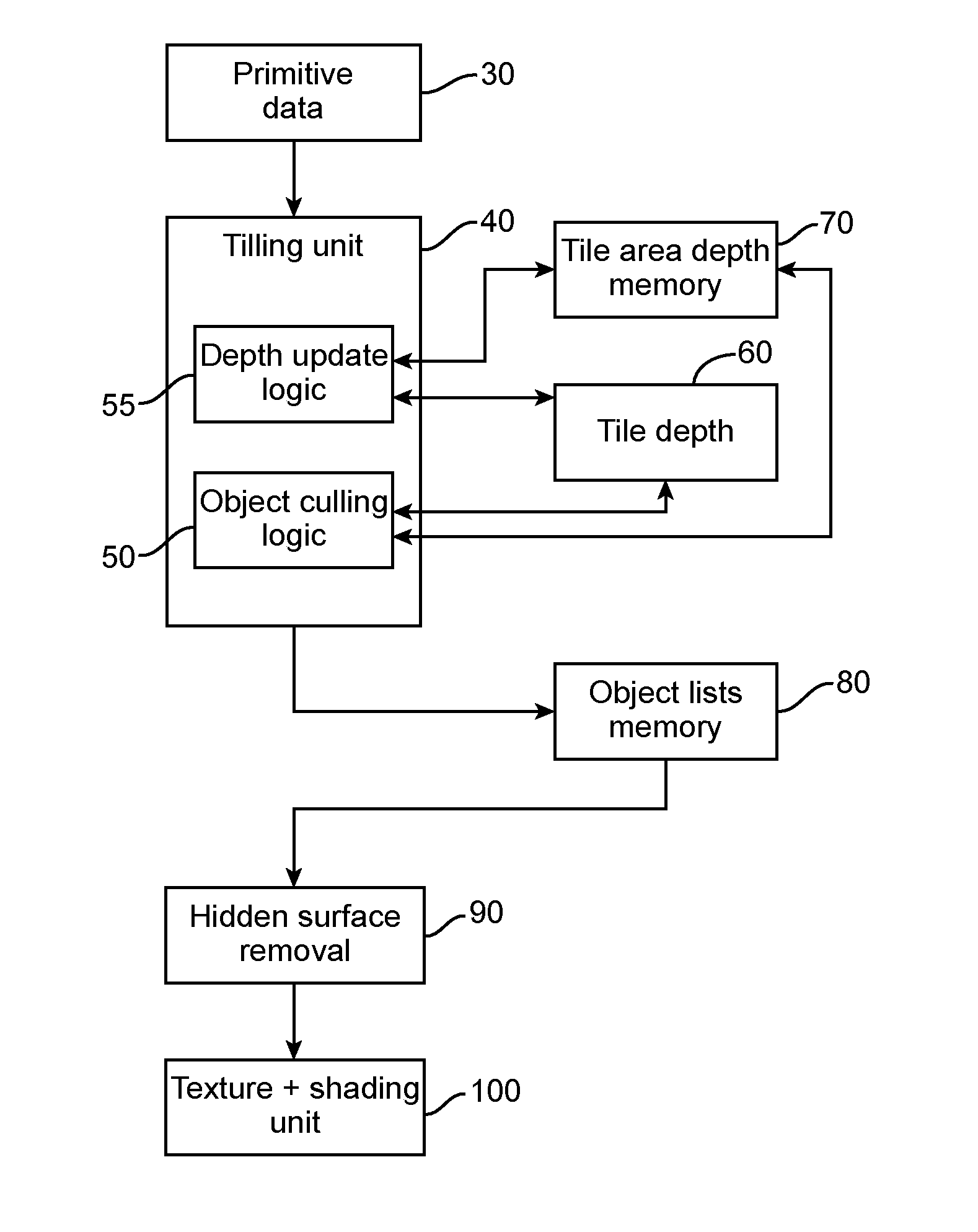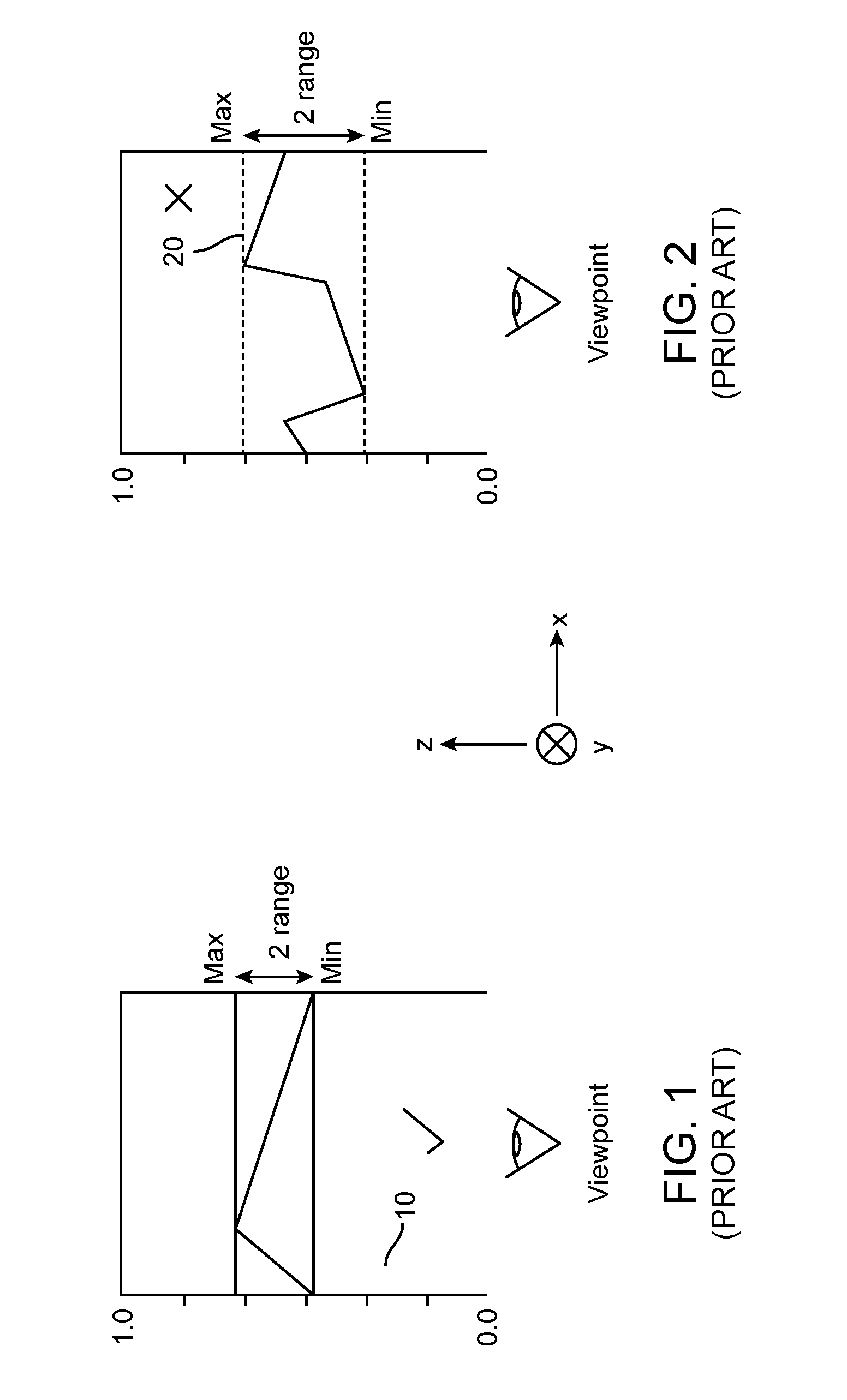Hidden Culling in Tile-Based Computer Generated Images
a computer generated image and hidden culling technology, applied in the field of hidden culling in tile-based computer generated graphics system, to achieve the effect of improving the effectiveness of depth culling, limiting the amount of memory space required, and improving any depth culling
- Summary
- Abstract
- Description
- Claims
- Application Information
AI Technical Summary
Benefits of technology
Problems solved by technology
Method used
Image
Examples
Embodiment Construction
[0049]The term “object” is used in the following to describe a graphical element such as a primitive or a model generally referred to within the computer graphics industry as a “patch” of surface data. A “patch” is typically a parametric function defined by a set of control points which describe the shape of a curve with respect to parameter “t” (for a curved line) or domain coordinates ‘u,v’ (for a curved surface). One example of a patch used in computer graphics is a Bezier patch, but others exist as will be appreciated by a person skilled in the art. Tessellation is a technique which involves breaking up a model or “patch” into a plurality of tessellated primitives. A patch is typically split into multiple primitives which may then be displaced by a function and / or in dependence on a displacement height map to create a plurality of tessellated primitives.
[0050]As will be known to those skilled in the art, tessellation of patches of surface data in a graphics pipeline can be suppo...
PUM
 Login to View More
Login to View More Abstract
Description
Claims
Application Information
 Login to View More
Login to View More - R&D
- Intellectual Property
- Life Sciences
- Materials
- Tech Scout
- Unparalleled Data Quality
- Higher Quality Content
- 60% Fewer Hallucinations
Browse by: Latest US Patents, China's latest patents, Technical Efficacy Thesaurus, Application Domain, Technology Topic, Popular Technical Reports.
© 2025 PatSnap. All rights reserved.Legal|Privacy policy|Modern Slavery Act Transparency Statement|Sitemap|About US| Contact US: help@patsnap.com



